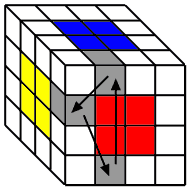Did an ao12 on six different methods on a whim:
Redux - 1:02.20
Yau - 1:07.12
Yau variant - 55.20 (cf. example solve)
Hoya - 1:05.17
Cage - 1:35.94
Sandwich - 1:20.40
I don't practise with Hoya at all, and somehow I still manage to get (marginally) better times with it than Yau. Maybe more surprisingly, I'm significantly faster with redux. This might be related to how much of F2C I manage to plan out; with redux I have 3 choices for F2C, versus 2 for Hoya and only 1 for Yau.
1:20 for sandwich is somewhat faster than when I was using it as my main method (1:30-ish in early 2016), although I do know full CLL now along with way more centre commutators. (I'm still somewhat amazed that I had a classmate who could sub-minute with sandwich, and with much worse hardware than we have today.)
Redux - 1:02.20
Yau - 1:07.12
Yau variant - 55.20 (cf. example solve)
Hoya - 1:05.17
Cage - 1:35.94
Sandwich - 1:20.40
I don't practise with Hoya at all, and somehow I still manage to get (marginally) better times with it than Yau. Maybe more surprisingly, I'm significantly faster with redux. This might be related to how much of F2C I manage to plan out; with redux I have 3 choices for F2C, versus 2 for Hoya and only 1 for Yau.
1:20 for sandwich is somewhat faster than when I was using it as my main method (1:30-ish in early 2016), although I do know full CLL now along with way more centre commutators. (I'm still somewhat amazed that I had a classmate who could sub-minute with sandwich, and with much worse hardware than we have today.)



